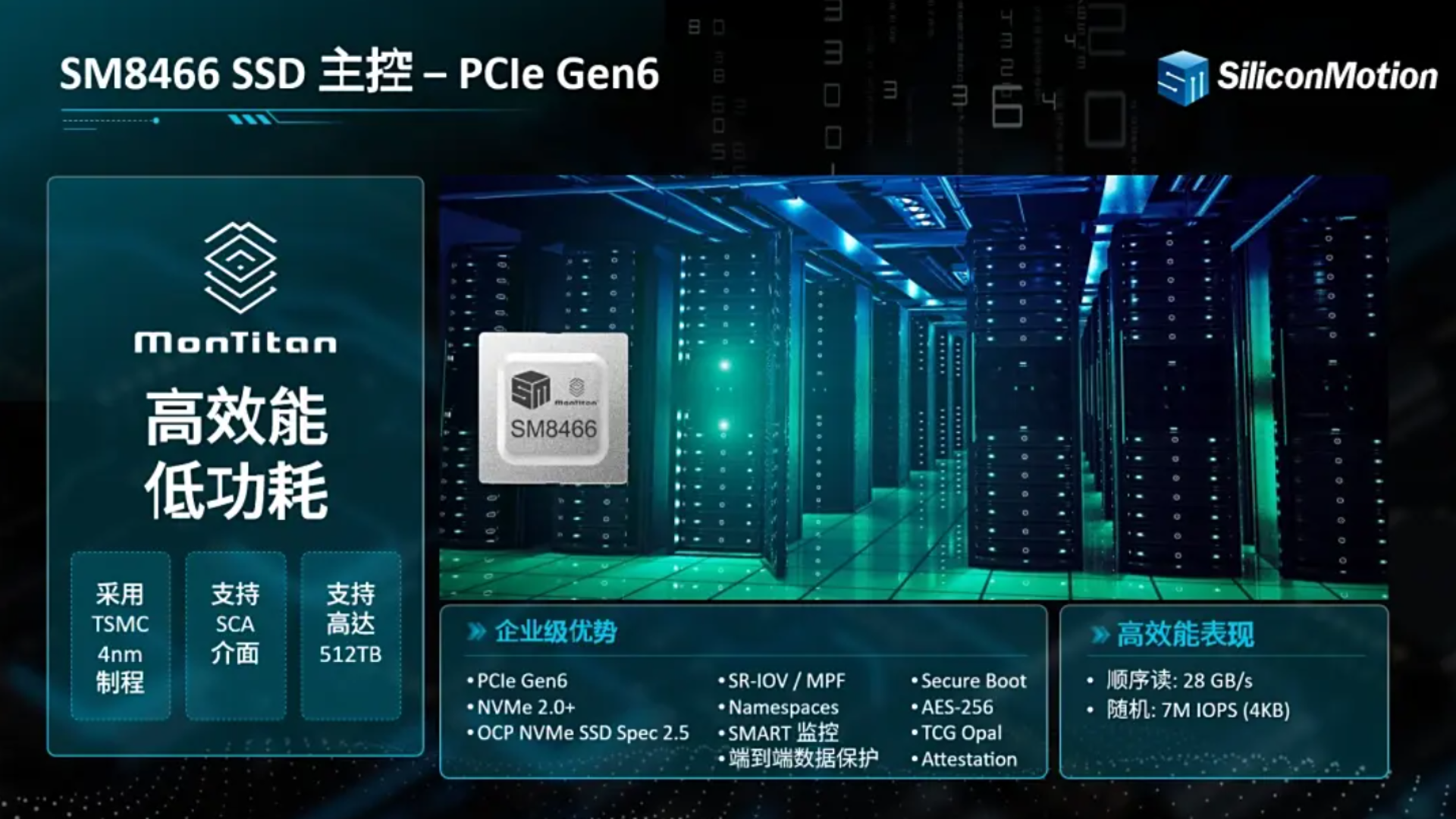Next-gen PCIe 6.0 SSD to reach 512GB in capacity and 28GBps in performance, almost 2X faster than PCIe 5.0, but I can't see it reaching my desktop PC before 2030
Hitting 28GBps is great, but not if all you run is Chrome and Spotify

- Silicon Motion SM8466 SSD brings enterprise-grade speed and security to the future of data infrastructure
- Up to 512TB of NAND makes this controller ready for tomorrow’s storage-heavy workloads
- Designed for scale, not your setup, this SSD will likely stay in the server room
Silicon Motion’s new SM8466 SSD controller makes a strong case for what next-generation storage could deliver.
Built using TSMC’s 4nm process, the controller is engineered for performance-heavy environments and claims to nearly double the throughput of PCIe 5.0 devices.
But while its specifications may seem tailored for the fastest SSDs in enterprise settings, its practical relevance to consumer desktops remains questionable, at least for now.
Performance figures promise a leap, but for whom?
Silicon Motion claims the SM8466 can hit a peak sequential read speed of 28GB per second, nearly twice the throughput of PCIe 5.0 solutions.
This kind of performance may be ideal for real-time analytics, large-scale database operations, and high-definition media processing, but for most users, such capabilities far exceed everyday requirements.
The 7 million random IOPS (input/output operations per second) for reads and writes further suggest its optimization for virtualized environments and high-load scenarios where latency must be kept low and response times consistent.
Whether this qualifies it as the best SSD is a matter of perspective, especially given the limited relevance to mainstream PCs.
Sign up to the TechRadar Pro newsletter to get all the top news, opinion, features and guidance your business needs to succeed!
From a system design standpoint, the controller’s support for up to 512TB of NAND sounds promising for hyperscale storage applications.
However, this leap in storage capacity isn’t poised to redefine the consumer market.
Even the largest HDD options currently available for desktop use don’t approach this scale, and integrating such capacity into a single PCIe SSD will be both cost-prohibitive and thermally challenging outside data centers.
Beyond raw performance, the SM8466 includes a suite of features geared toward enterprise deployment.
It supports secure booting, AES-256 encryption, and TCG Opal compliance, which together aim to meet modern data protection requirements.
Its SMART monitoring system adds an extra layer of diagnostics and early failure detection, but these features are more useful in server racks than home rigs.
Physically, the SCA interface consolidates power, data, and management into a single connector, streamlining installation and minimizing cabling complexity.
Virtualization technologies such as SR-IOV and MPF allow the controller to present multiple virtual storage functions, further reinforcing its appeal to cloud service providers rather than average users.
The benefits of the SM8466 are clear for large-scale, high-demand environments, but the average consumer is unlikely to experience these advantages before the decade ends.
Via Guru3d
You might also like
- These are the best NAS devices around
- UK police arrest four following cyberattacks on M&S, Co-op, Harrods
- We've rounded up the best cloud storage platforms on offer

Efosa has been writing about technology for over 7 years, initially driven by curiosity but now fueled by a strong passion for the field. He holds both a Master's and a PhD in sciences, which provided him with a solid foundation in analytical thinking.
You must confirm your public display name before commenting
Please logout and then login again, you will then be prompted to enter your display name.